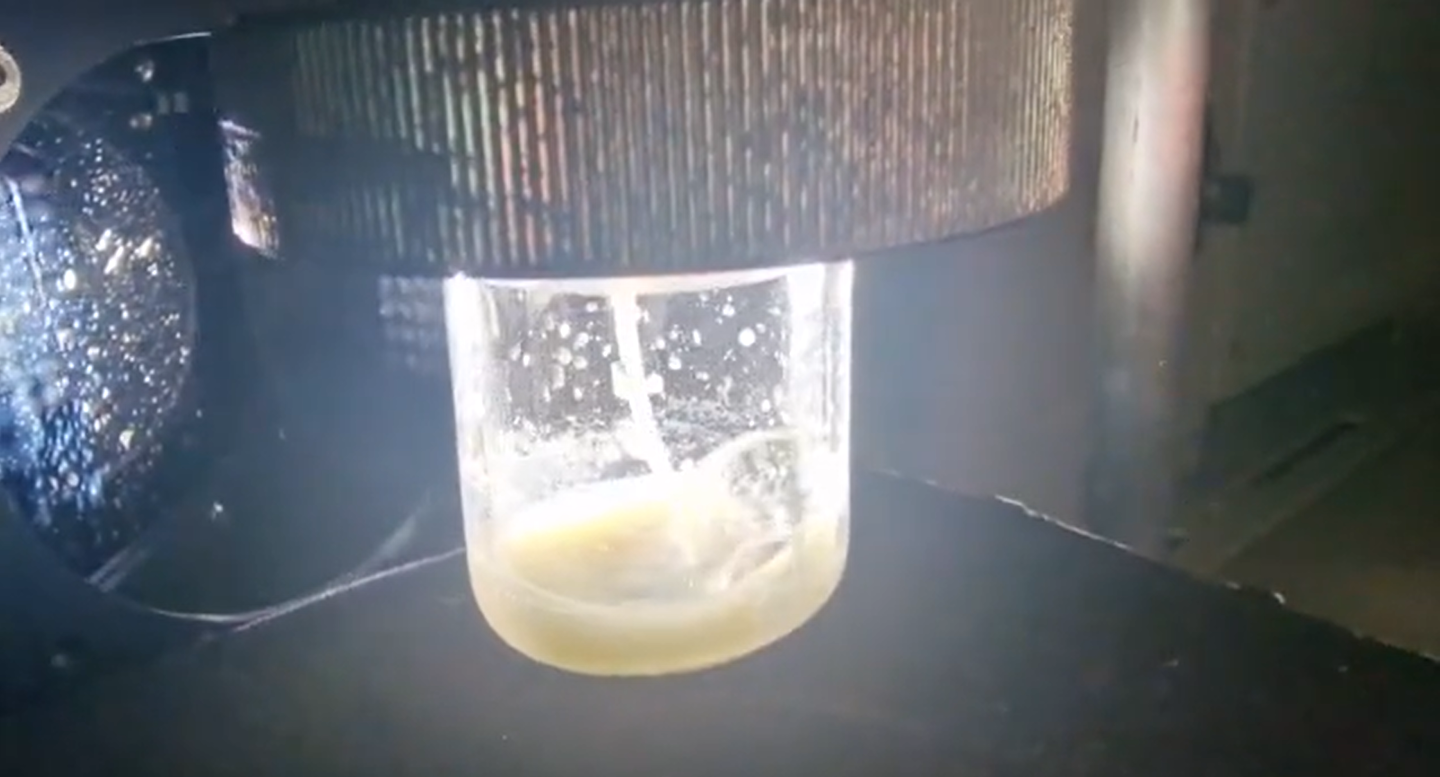Researchers have successfully transformed CO2 into methanol using sunlight
A breakthrough in the quest for green fuels by converting carbon dioxide (CO2) into methanol using sunlight and copper atoms.

A breakthrough in the quest for green fuels by converting carbon dioxide (CO2) into methanol using sunlight and copper atoms.(CREDIT: University of Nottingham)
Scientists have achieved a breakthrough in the quest for green fuels by converting carbon dioxide (CO2) into methanol using sunlight and copper atoms.
This innovative approach, developed by an international team of researchers from the University of Nottingham's School of Chemistry, University of Birmingham, University of Queensland, and University of Ulm, offers promising prospects for sustainable energy solutions.
The researchers designed a novel material composed of copper anchored on nanocrystalline carbon nitride, where the copper atoms are integrated within the carbon nitride structure.
Reactor where the catalyst is tested for turning CO2 to methanol. (CREDIT: University of Nottingham)
This arrangement facilitates the movement of electrons from carbon nitride to CO2 when exposed to solar irradiation, a crucial step in methanol production. The findings of this study have been published in the Sustainable Energy & Fuels Journal of the Royal Society of Chemistry.
Photocatalysis, the process of using light to drive chemical reactions, involves illuminating a semiconductor material to energize electrons, enabling them to react with CO2 and water to produce various products, including methanol. However, conventional methods suffer from inefficiency and lack of selectivity.
Carbon dioxide is a primary contributor to global warming, emphasizing the urgency of finding sustainable ways to convert it into useful products.
Related Stories
Traditional thermal methods rely on hydrogen sourced from fossil fuels, underscoring the importance of developing alternative approaches based on solar and water-based catalysis.
Dr. Madasamy Thangamuthu, a research fellow at the University of Nottingham, highlighted the significance of efficient light absorption and charge separation in photocatalysis.
The team's approach involved controlling the material at the nanoscale, leading to the development of a new form of carbon nitride with crystalline nanoscale domains that enhance interaction with light and facilitate charge separation.
Endohedral fullerenes are introduced into the internal cavity of a SWCNT via sublimation, forming a one-dimensional, linear “peapod” chain. (CREDIT: ACS Nano)
The researchers employed a process involving heating carbon nitride to achieve the desired degree of crystallinity, thereby optimizing its functional properties for photocatalysis. Through magnetron sputtering, they deposited atomic copper onto the carbon nitride in a solventless process, ensuring intimate contact between the semiconductor and metal atoms.
Tara LeMercier, a PhD student involved in the experimental work, emphasized the remarkable efficiency of the catalyst. Even without copper, the new form of carbon nitride exhibited significantly higher activity compared to traditional carbon nitride. However, the addition of a small amount of copper dramatically increased efficiency and changed the selectivity from methane to methanol, a valuable green fuel.
HAADF-STEM image of a bundle of (nKr@C60n)@SWCNT (adjusted γ = 0.40), with bright lines in the center of the nested nanotubes corresponding to highly mobile Kr atoms. (b–d) EELS maps acquired simultaneously with HAADF image. (CREDIT: ACS Nano)
Professor Andrei Khlobystov underscored the importance of sustainable catalyst materials for carbon dioxide valorization, emphasizing that the new catalyst comprises abundant elements such as carbon, nitrogen, and copper.
This breakthrough represents a significant advancement in understanding photocatalytic materials for CO2 conversion, offering a pathway to develop highly selective and adjustable catalysts by controlling them at the nanoscale.
Calculation of the relative intensity of gaseous Kr atoms (green box) versus stationary Kr atoms (blue boxes) in HAADF-STEM image. (CREDIT: ACS Nano)
The research is supported by the EPSRC Programme Grant 'Metal atoms on surfaces and interfaces (MASI) for sustainable future,' aimed at developing catalyst materials for the conversion of key molecules crucial for the economy and environment, including carbon dioxide, hydrogen, and ammonia. MASI catalysts are designed to utilize chemical elements efficiently, ensuring sustainable use without depleting rare resources.
The University of Nottingham is committed to promoting green and sustainable technologies. The establishment of the Zero Carbon Cluster in the East Midlands aims to accelerate the development and deployment of innovative solutions in green industries and advanced manufacturing.
For more science and technology stories check out our New Innovations section at The Brighter Side of News.
Note: Materials provided above by The Brighter Side of News. Content may be edited for style and length.
Like these kind of feel good stories? Get the Brighter Side of News' newsletter.
Joshua Shavit
Science & Technology Writer | AI and Robotics Reporter
Joshua Shavit is a Los Angeles-based science and technology writer with a passion for exploring the breakthroughs shaping the future. As a contributor to The Brighter Side of News, he focuses on positive and transformative advancements in AI, technology, physics, engineering, robotics and space science. Joshua is currently working towards a Bachelor of Science in Business Administration at the University of California, Berkeley. He combines his academic background with a talent for storytelling, making complex scientific discoveries engaging and accessible. His work highlights the innovators behind the ideas, bringing readers closer to the people driving progress.



